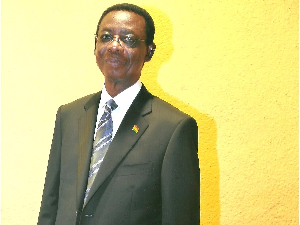The government’s measures put in place to control the country’s wage bill are yielding good results, Mr. Samuel Arkurst, acting Director, Debt Management Division, Ministry of Finance, has said.
He said the country’s wage bill as a ratio of total revenue, expenditure and Gross Domestic Product (GDP) had been witnessing a down trend.
“For example, wage bill, including arrears payment ratios for 2014, were 51.6 per cent of tax revenue, 54.9 per cent of tax revenue (less exemptions), 67.6 per cent of non-earmarked tax revenue, 8.7 per cent of GDP and 31.4 per cent of total expenditure,” he said.
“Thus, in current times, especially after the completion of the payment of arrears to workers on the SSPP, the wage to tax revenue ratio has not reached 70 per cent of tax revenue,” he said.
Speaking in an exclusive interview with Times Business in Accra on Friday, Mr. Arkurst said the active staff strength for mechanised and sub-vented institutions was 653,986 as at April 2015, and not 800,000 as reported in a section of the media.
The government’s expenditure in the annual budget comprises compensation of employees (wages and salaries, pensions, gratuities, and social security), goods and services supplied to ministries departments and agencies, capital expenditure, debt service for Ghana’s loans and payments to statutory funds which are established by Acts of Parliament (Example GETFund and National Health Insurance).
Mr. Arkurst said of all the stated expenditure, the portion for wages and salaries was the largest.
He said over the past few years, the commitment to ensure proper remuneration for public servants and the impact of the size of the public sector wage bill on taxpayers’ money, had been of great concern to government and other stakeholders.
The government, he said, also recognised that the issue of public sector wage bill did not rest on it alone, but also with its stakeholders, who all want to ensure an effective utilisation of the taxpayers’ money.” The Single Spine Pay Policy (SSPP) conceived and formulated around 2007, came into implementation in 2010.
This was based on job evaluation of workers in an organisation, and not the qualification of workers who graduated from the same school.
The payment of salaries under the SSPP is based on equal pay for job of equal value, and not of equal qualification.
Since the migration of staff onto the Single Spine Salary Structure was executed in a staggered manner, arrears accumulated.
These arrears were negotiated between government and Unions in early 2011to be paid between 2011 and 2012, contrary to the belief that single spine wage and arrears payment was an election phenomenon.
Mr. Arkurst said following the formulation of the SSPP, major reforms were embarked upon by the government in areas such as policy formulation and issuance of guidelines on compensation budget, co-ordination and monitoring of the preparation of the compensation budget by MDAs and MMDAs and the monitoring of the execution of the compensation budget.
He also cited the use of Information and Communications Technology System (ICT), integration of payroll to GIFMIS financials, work plan on cleaning of payroll data, monthly validation of the payroll by heads of department using the e-spv system e-payslip system and registration of employees on the e-zwich system, as the rest of the measures put in place by the government to reduce the country’s wage bill.
Business News of Wednesday, 10 June 2015
Source: Ghanaian Times
Govt’s measures to control wage bill yielding results
Entertainment












